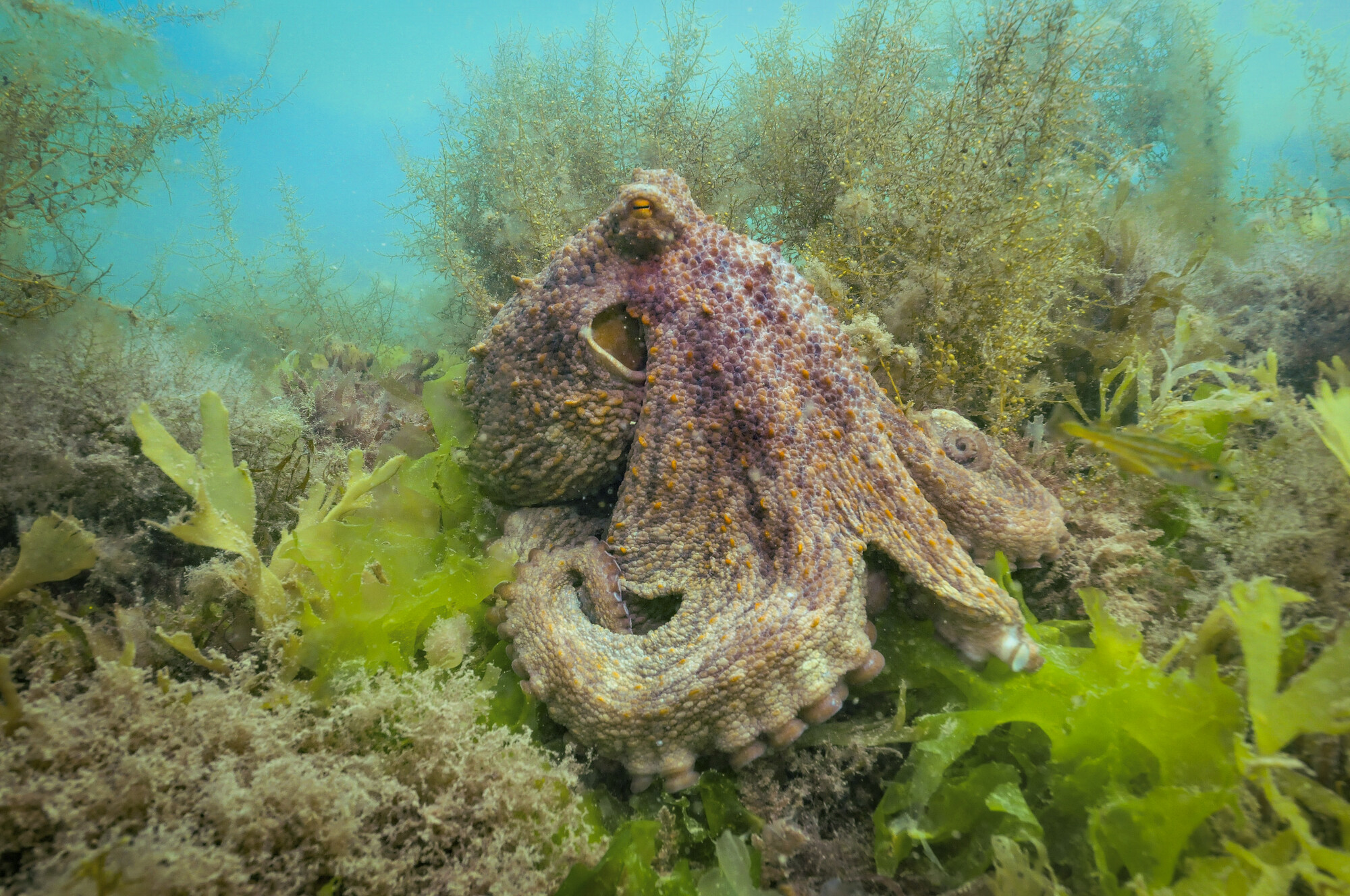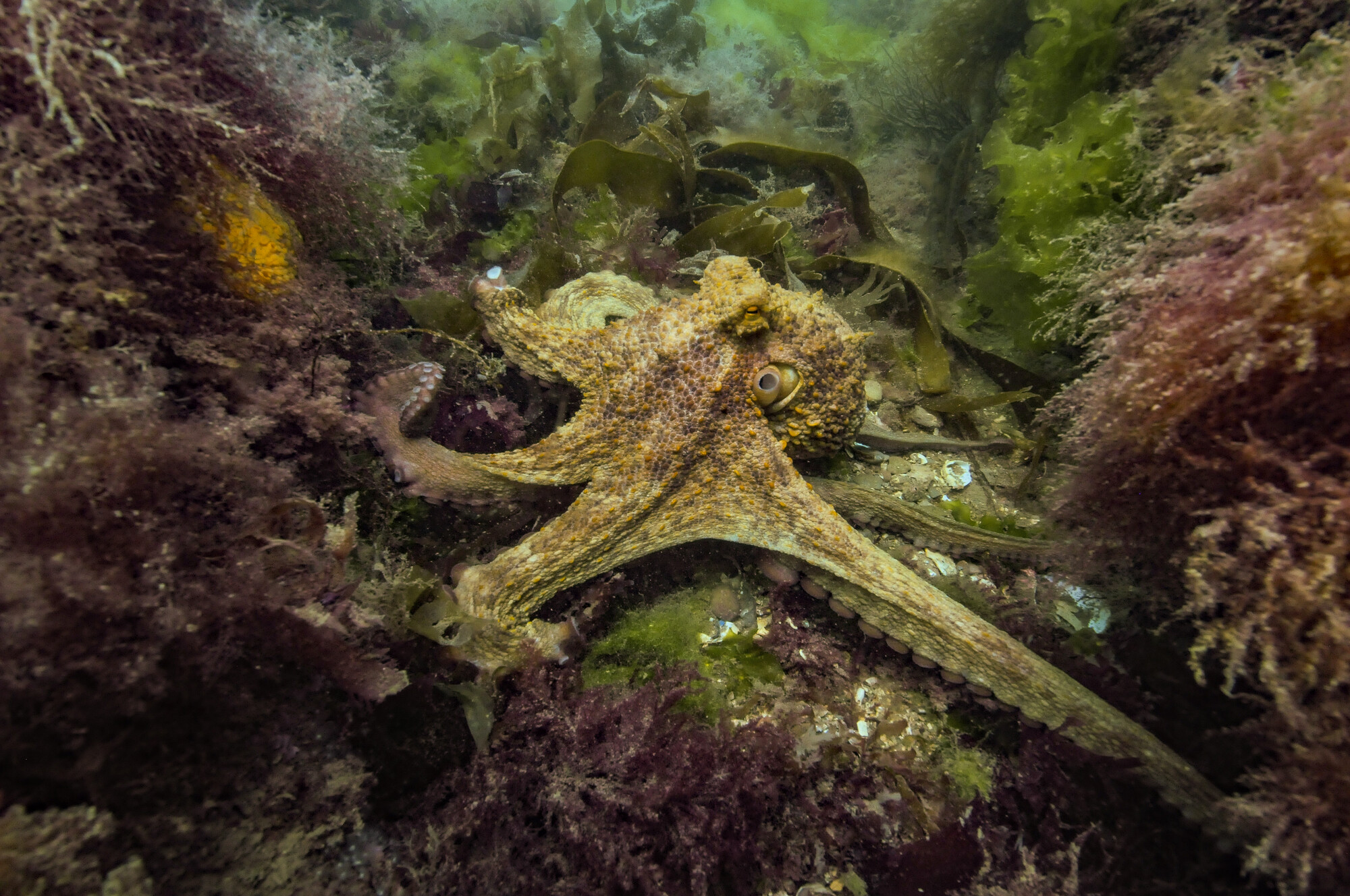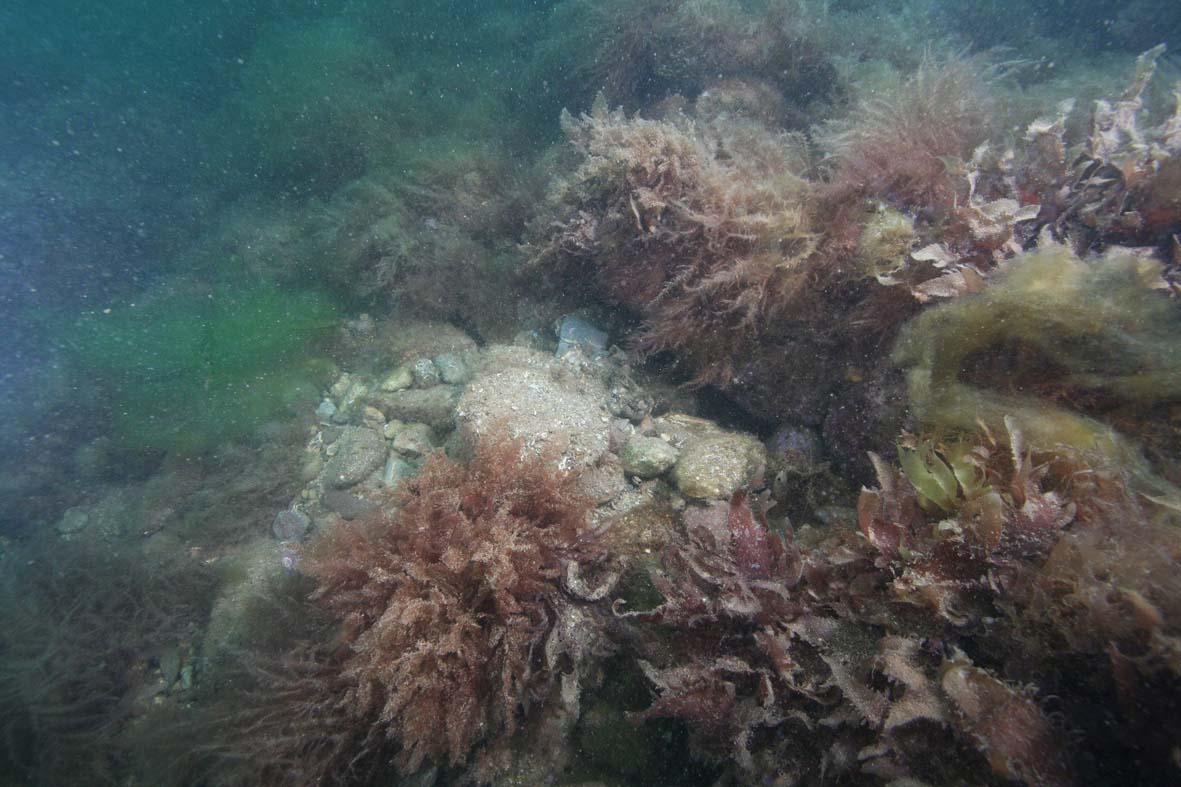Tucked away in seabed dens in the Western English Channel, a new generation of common octopus is developing, carefully guarded by mothers whose final act is to tend over their brood of eggs. Once hatched, the larval octopus will disperse widely, oblivious to the fact that their fate is being closely watched.
Winners and losers
Since 2022, trawlers and potters in northern France and South West England have been landing increasing quantities of common octopus (Octopus vulgaris) . In May 2025, a trawler operating out of Newlyn, Cornwall, landed almost 20 tonnes of octopus worth a record-breaking £158,000.
The surge in abundance could be a blessing for the small-scale fishing sector, as O. vulgaris are a high-value, non-quota species, meaning there is no limit on what can be landed. But there’s a problem: these large, adaptable predators enter fishermen’s pots and devour the crab, lobster, spiny lobster, scallops, and whelks within. Populations of common octopus have bloomed in the Western English Channel before, in 1900 and in 1950, leaving many shellfishermen with no option but to stop fishing. Marine Biological Association scientist Walter Garstang focused on the damage to the shellfishery when he wrote in a 1900 paper of ‘marauding bands’ of large octopus off the south coast of England.
The common octopus is found worldwide in temperate and tropical seas. It is commercially important and occupies a central role in food webs in temperate ecosystems.


Common octopus at
Shoalstone Beach, Torbay,
South Devon, UK.
© Keith Hiscock.
Beshlie Pool, Executive Officer of South Devon and Channel Shellfishermen, said, ‘The influx of common octopus into Channel waters is extremely worrying for our fleet of shellfishermen. Whilst some are able to catch octopus and make a reasonable living for at least the short term, others are facing significant drops in their traditional catches.’
‘Cephalopods such as a squid, octopus, and cuttlefish are generally ‘winners’ when it comes to changing seas, even with issues like climate change and overfishing’ says Alix Harvey, Ecology Laboratory and Research Aquarium Manager at the MBA. ‘Their short lifespan, rapid reproduction, and intelligence allows them to exploit new environments.’
Plankton surveys in the years before the 1950 bloom showed that octopus larvae originated on the south side of the English Channel. This year, octopus have been observed to be breeding on the English side. Once larval octopus settle out of the plankton, the juveniles need a mild winter to survive—not unlikely around southern England as sea temperatures rise. However, recruitment of cephalopods in general is variable year on year and is sensitive to extreme climatic events.

The den of a common octopus
in Torbay where a
female guards her eggs for 3–4
months until they hatch.
© Keith Hiscock.
Fishers and regulators working together
Devon & Severn Inshore Fisheries and Conservation Authority (D&SIFCA) oversees fishing activity in South Devon where octopus numbers are highest. The relevant legislation here is the Potting Permit Byelaw which stipulates that ‘escape gaps’ must be fitted to crab and lobster pots with entrances constructed from netting to allow the escape of juvenile or undersized crustaceans. Introduced as a beneficial stock conservation measure, the escape gap makes a convenient exit for voracious octopus after they have finished dining on fishermens’ catches of shellfish.
D&SIFCA has clarified that under the existing potting bylaw, if fishing for octopus only, the escape gap can be closed, but any crustaceans caught in a pot with a closed escape gap must be returned to the sea. Conversely, if fishing for crab, lobster, and spiny lobster, the escape gap must remain open.
As well as acting rapidly to enable fishers to adapt legally to the situation, D&SIFCA is working with fishers to understand how effective a closed escape gaps is for retaining octopus. This responsive collaboration to gather evidence is an important part of the IFCA’s role.
A national meeting between fishers, the Marine Management Organisation, and scientists took place recently to discuss the impacts of the influx of octopus, how to protect existing stocks of crustaceans and shellfish, the octopus fishery in the short and long term, and potential management solutions. Defra subsequently commissioned a study, led by MBA Senior Research Fellow Dr Bryce Stewart, that seeks to better understand the phenomenon and its impact on fishermen and the wider marine environment. Find out more.
An alignment of environmental factors has once again helped common octopus move into the northern limits of their range in large numbers. It is important to understand how long-term climate and ecological trends will affect the future distribution of O. vulgaris, not least because its fate is bound up with that of fishers in the region. Interdisciplinary research will be key to inform policies that deliver the best outcomes for the environment, fishers’ livelihoods, and the resilience of coastal communities.
Guy Baker Mem.MBA (editor@mba.ac.uk)
Further reading Garstang, W. 1900. The plague of octopus on the south coast, and its effect on the crab and lobster fisheries. Journal of the Marine Biological Association of the United Kingdom 6: 260-273. doi:10.1017/S0025315400006639
Rees, W.J. and Lumby, J.R. 1954. The abundance of octopus in the English Channel. Journal of The Marine Biological Association of the United Kingdom 33: 515-536.
Schickele, A., Francour, P. and Raybaud, V. 2021. European cephalopods distribution under climate-change scenarios. Scientific Reports 11: 3930 (2021). doi.org/10.1038/s41598-021-83457-w
